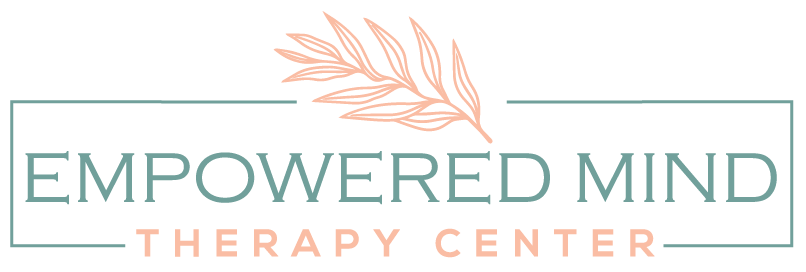EMDR Therapy: What to Know & How to Prepare
When deciding whether EMDR therapy is right for you, ask yourself these questions:
Is my past troubling me in my present? Am I often unable to manage my emotions?
Do my trauma triggers keep me from doing things I need & want to do?
Am I willing to revisit difficult feelings in order to ultimately feel better?
Do I have the bandwidth to commit myself to this process?
What format of EMDR therapy would work best for me? Weekly, Adjunct, or Intensive?
Eye Movement Desensitization Reprocessing (EMDR) is a type of therapy used to heal the effects of trauma. It can also be used for many other types of mental health concerns. Your EMDR therapist will guide you through recalling a disturbing memory. While at the same time, using a special technique called bilateral stimulation (BLS), usually guided eye movements or tapping. These techniques will help your brain reprocess and make sense of disturbing memories. It may take some time, but eventually, the memories won't bother you like they did before.
What does it feel like?
EMDR is very different than traditional talk therapy. While there is certainly talking taking place, EMDR therapy is different, and very effective, because of the use of BLS. BLS recreates a similar natural process our brains already know how to use while we sleep. However, with EMDR you are wide awake and in full control. There are different ways to achieve BLS. Your therapist might use eye movements, sounds, or taps that are used in a set pattern and rhythm. When we go through something traumatic or disturbing, our brains store the event in an unhelpful way. The idea is to help the brain reorganize thoughts and feelings in a more helpful way so it can heal from trauma.
What happens during an EMDR Therapy session?
EMDR therapy works with the brain's natural information processing system. The therapist helps the client focus on memories, thoughts, and feelings related to their traumatic experience. As the client focuses on these memories and experiences, the therapist guides the process to achieve a level of 0 disturbance or activation when you think of the experience. The goal is to think of a once disturbing experience, and not have it emotionally overwhelm or trigger you anymore.
A great thing about EMDR therapy is that you are not required to disclose details of traumatic events if you do not want to. Your therapist can still use it to help you heal, without you having to say details out loud if it’s just too hard to do.
Is there any preparation I can do for my first session?
If this is your first time in EMDR therapy, or therapy at all, it is unlikely you will jump into trauma reprocessing during a first session. It may take several sessions before you and your therapist agree on readiness to begin reprocessing trauma and disturbing events.
During your first session, your therapist will ask you many questions about yourself, what you are struggling with currently, and what connections you’ve made, if any, of these struggles to events of your past. Together you and your therapist will determine what memories or “targets” might help to explore first, and what is needed to help you prepare.
First, the treatment plan and first target must be established. Then once you’ve developed the tools you need to proceed, your therapist will then guide you through reprocessing. You’ll reprocess images, beliefs, emotions, and body sensations related to the experience you want to work providing a series of back-and-forth eye movements (or other forms of BLS).
It’s important to know that some memories can be fully processed in one session, while others can take several sessions. There are a lot of factors that contribute, including types of trauma, age at time of experience, and support system. It’s important to enter EMDR therapy with an open mind to your specific process, not an expectation of problems being “fixed” or “solved” quickly.
Are there things I should be doing in between appointments?
Sure, there are a few things you can do between appointments to help ensure progress in your treatment. You can write down any thoughts, memories, or dreams that come up, and discuss them for your next session. You can also keep a list of the negative or positive beliefs identified in the session, and take note of what triggers them between sessions. The more connections and observations you make before the next appointment, the more informed you and your therapist will be, and ultimately maximize your progress.
Which EMDR Therapy format (Weekly, Adjunct, or Intensive) would work best for me?
Weekly EMDR Therapy
Many people find the traditional model of weekly therapy very helpful. In weekly EMDR therapy, you can make steady progress in your treatment goals, with regular contact with your therapist. Weekly sessions are great for a slow and steady healing process.
Adjunct EMDR
For others who are already in talk therapy, but find they are “stuck” in their current work with their talk therapist, Adjunct EMDR is a great option. With Adjunct, you may continue your work with your current talk therapist, and address a specific issue with your EMDR therapist. Your ongoing talk therapist and EMDR therapist can work together to ensure you reach your goals.
EMDR Intensive Therapy
Many people have found that EMDR intensive therapy is highly beneficial. It is an accelerated treatment program that can help you go further, and faster in your healing work. EMDR Intensive therapy is a fixed amount of longer sessions (90min to 3+ hours). All of which are customized to meet your needs. At Empowered Mind Therapy Center we also offer a customized workbook to maximize the impact of your treatment.
What should I do if I’m interested in starting EMDR in the San Francisco bay area? Or online in California?
As mentioned before, EMDR therapy is very different from talk therapy and is different for each person depending on their unique experiences. You may have additional questions about how Eye Movement Desensitization Reprocessing can help you in particular. We can answer your questions! If you're interested in starting counseling at Empowered Mind Therapy follow these steps:
Get in touch with our Client Care Coordinator at 925-257-0205 or book your free consultation
Start working with an EMDR therapist
Get started on your healing journey and finally feel better.
Other Services We Offer in the San Francisco Bay Area
We offer a variety of counseling services for women of color. This includes relief and support for anxiety, depression, and relationship issues. Additionally, EMDR therapy isn’t the only form of counseling that we offer. Our caring therapists also offer Brainspotting.
All of these services are available in person at our Walnut Creek, CA-based therapy practice or online throughout California.



